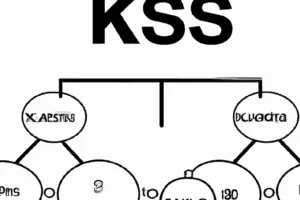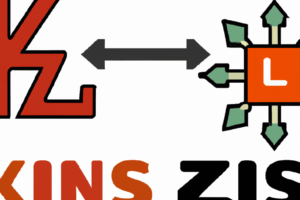
Blockchain technology has come a long way since the inception of Bitcoin in 2009. Yet despite its meteoric rise and adoption across various industries, blockchain still faces some fundamental limitations. Most notably, its transaction-focused nature can make it challenging for users and developers to directly communicate their intended goals. This is where the emerging concept of intent-centric blockchain comes in – representing an evolution in blockchain design that could unlock far greater capabilities.
Defining Intent-Centric Blockchain
At its core, intent-centric blockchain shifts the emphasis from transactions to user intent. Rather than specifying detailed steps to achieve a goal, users simply declare their desired outcome. The blockchain then handles the execution automatically, leveraging AI and smart contracts to deliver on that intent.
To illustrate with a simple example, let's imagine using blockchain to buy a cup of coffee. On a transaction-based blockchain like Ethereum, the user would need to carefully execute a series of steps – initiating payment in cryptocurrency, awaiting confirmation on the blockchain, triggering the release of the digital asset (coffee), and so on.
With an intent-centric blockchain, the user could simply state “I want to obtain a cup of coffee” and the system would understand and execute the required transactions in the background. This not only offers a simplified and more intuitive user experience, but also enables entirely new use cases not possible with transaction-focused blockchains.
More broadly, intent-centric blockchains aim to provide:
- Improved UX – No need to manage complex transactions and protocols. Just declare the intent and let the system handle the details.
- Enhanced Privacy – Focus on the intent rather than the specifics of the underlying transactions enhances privacy and data security.
- Greater Interoperability – Structuring information around user intent makes it easy to port data between different applications.
- Increased Automation – Complex execution flows can happen automatically with minimal user input required.
By freeing users and developers from transactional details, intent-centric blockchains open up blockchain technology to whole new audiences and use cases.
Key Benefits of Intent-Centric Blockchain
Intent-centric blockchains aim to unlock several key advantages over traditional transaction-focused blockchains:
Enhanced User Experience
Today's blockchain-based applications often have a steep learning curve and poor user experience. Intent-centric blockchain radically simplifies this by allowing users to ignore the transactional complexities. For example, in supply chain applications, users could simply declare their intent to “receive the shirt ordered on 09/02/2022” rather than manually tracking orders and shipments. This makes blockchain much more accessible to everyday users.
Improved Privacy and Security
By masking transaction-level details, intent-centric blockchains provide greater privacy. Users can opaque their intents to precisely the details necessary, avoiding exposing unnecessary data. Intent-based declarations are also more resilient against transaction-level attacks. Automated execution flows minimize vulnerabilities introduced through manual processes.
Enhanced Composability
Structuring information around user intent makes it far easier to port data across different applications. For example, supply chain data structured by user intent could seamlessly connect to inventory management, forecasting, procurement and other systems. This composability unlocks new opportunities to share and combine data.
Increased Automation
Intent-centric blockchains enable automation of complex execution flows across organizations based on user intents. For instance, an intent like “Manufacture 100 units of Product X by Date Y” could trigger automated workflows for procurement, production scheduling, quality control, shipment and more. This reduces need for manual coordination.
Challenges and Limitations
Despite its immense promise, intent-centric blockchain still faces some notable limitations and challenges today:
- Technological Maturity – Smart contract logic, AI inference and information modeling required for intent-centric blockchain are still maturing. Significant research and development is still needed.
- Ecosystem Buy-In – Businesses will need to evolve their processes and data to work with intent-centric models. This level of ecosystem change may hinder adoption.
- Regulatory Uncertainty – Regulations around data privacy, AI and automation will need to adapt to enable some use cases of intent-centric blockchain. Regulatory uncertainty may slow adoption.
- User Habits – Users accustomed to blockchain may find the opacity of intent-based declarations challenging. Methodical transaction thinking is deeply ingrained in the Web3 community.
The Future of Intent-Centric Blockchain
Despite these challenges, intent-centric blockchain represents an important evolution in decentralized technologies. Some potential areas it could transform include:
Decentralized Applications
Intent-based declarations can massively improve UX for decentralized apps (dApps), opening up blockchain to mainstream audiences. Execution flows handled automatically by the blockchain minimize user burden.
Supply Chain Management
Tracking goods and services based on user intent (rather than specific transactions) could massively simplify supply chain coordination across organizations. Automation enabled by intent-centric blockchain can help optimize logistics.
Identity and Reputation
User identity and reputation systems could be constructed around verifiable intents rather than transaction histories. This provides greater privacy while still confirming reliability.
Compliance and Regulations
Regulators could monitor marketplace participants based on abstract intents to ensure fair competition and conduct. This maintains privacy while still providing oversight.
Payments and Settlement
Users could authorize automated payments from abstract intents like “Pay monthly subscription on X”. This simplifies recurring and conditional payments on the blockchain.
The intent-centric model unlocks new capabilities while retaining the core benefits of blockchain technology – decentralization, security, transparency and trust. With further maturation, intent-centric blockchains could power the next generation of the decentralized web and make blockchain accessible for all. The future looks promising as we move from transaction-centricity to an intent-driven world.
Intent-centric blockchain represents an important evolution in decentralized application design. By focusing on user intents rather than specific transactions, it provides an intuitive user experience and enables automation of complex execution flows. Despite current limitations around maturity and adoption, intent-centric blockchain opens up blockchain technology to whole new use cases and audiences. As research and development in this space continues, the future looks bright for intent-centric blockchain to power the next generation of decentralized applications across industries. Its user-centric approach could be key to unlocking mainstream blockchain adoption.
Progress in Intent-Centric Blockchain
While intent-centric blockchain is still emerging, notable progress has already been made in research and development. Some key milestones include:
Development Frameworks
Frameworks like Hyperledger Cactus and Cosmos SDK enable developers to build intent-centric blockchain applications more efficiently. They provide interfaces to capture user intents and automatically manage execution.
Data Modeling
Initiatives like DAML from Digital Asset have demonstrated how to model domain-specific data around user intent. This provides the foundation for intent-centric workflows.
Execution Languages
Smart contract languages like DAML and Flint let developers encode programmatic execution flows triggered by user intents. This automates contract logic based on declared intents.
Integration Efforts
Partnerships between blockchain startups like Chainlink and traditional SaaS providers like Salesforce demonstrate a growing interest in connecting intent-centric blockchain to mainstream business systems.
Security Mechanisms
Secure computation techniques like zero-knowledge proofs are adapted to intent-centric blockchains to keep user intents private while verifying proper execution.
Governance Research
Governance structures for decentralized autonomous organizations are evolving to be driven by user intents rather than transaction-level voting. This allows for more flexible and user-centric governance.
User Studies
Early user studies by researchers at Cambridge University and MIT Media Labs provide data on the benefits of intent-centric models for usability and user perception. The findings are promising.
While much work is still ahead, these early steps show the momentum building behind intent-centric blockchain. As technologies and user habits mature, the intent-centric paradigm looks poised for mainstream adoption across industries. Exciting times lie ahead!

Alejandro Rodriguez, a tech writer with a computer science background, excels in making complex tech topics accessible. His articles, focusing on consumer electronics and software, blend technical expertise with relatable storytelling. Known for insightful reviews and commentaries, Alejandro's work appears in various tech publications, engaging both enthusiasts and novices.
Follow us on Facebook







